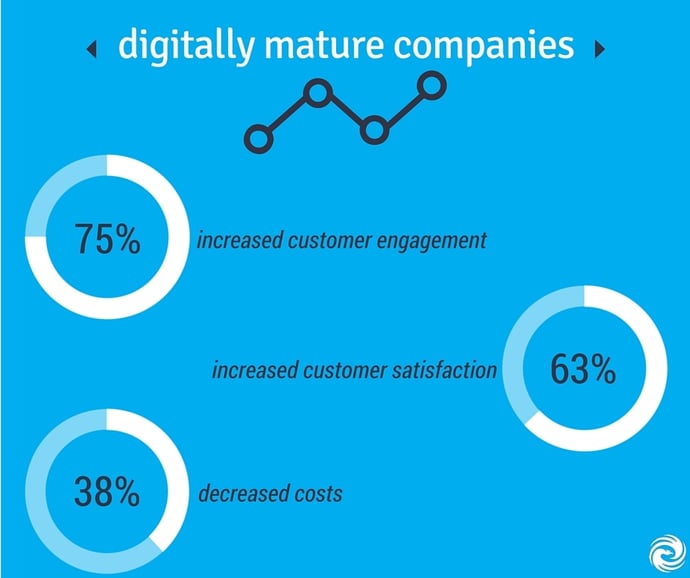Digital Transformation by the Numbers: The ROI of Digital Maturity

As much of a hot topic as it is right now, digital transformation can still be a tough sell to the highest levels of management. A true digital transformation does require putting in a fair amount of capital, and its return on investment has often been considered difficult to quantify. So how do we know that digital transformation will really bring in more than it costs to implement?
In fact, the idea that the effects of digital transformation are not quantifiable is simply not true. Research conducted by Forrester has found that firms that reach full digital maturity report seeing tangible results of their digital business strategy, including higher traffic, increased lead generation, and greater conversions and sales. On the whole, digital transformation both increases revenue and decreases costs.
Greater revenue and growth
A full 75% of digitally mature companies are experiencing greater customer engagement. This makes sense: when a company offers multiple channels of interaction, there is an increased number of touchpoints for customer engagement. Furthermore, customers that make use of multiple channels have been estimated to be fully three times more valuable than traditional single channel consumers.
These improved customer experiences have naturally also produced greater levels of customer satisfaction, as seen in 63% of digitally mature companies. Another 44% of the firms studied expected to grow market share as well.
Lowering costs
What may be more surprising to many is the tendency of digital transformation to reduce costs, rather than increase them. Among companies in the stage of full digital maturity, only 28% had seen their expenses go up, while in 38% costs had actually gone down.
This is not at all as strange as it seems: a mature digital transformation involves both platform unification and optimization of staff and technology, meaning operational costs take a nose dive. This same phenomenon also leads to other internal advantages, such as greater collaboration and productivity among employees.
A crucial part of the modern marketplace
At the end of the day, it’s fairly clear that where digital transformation is concerned, the math checks out. Frankly, though, the need for digital transformation is evident even without the numbers. Sticking to traditional ways of doing business not only means missing out on the benefits of digital transformation—in today’s dynamic marketplace, it’s no longer even safe.
The rate of market change is increasing and will continue to do so, and failing to keep up with those changes means losing out. The digital experience is more central than ever. In a survey, 73% of online consumers in the US stated that a poor experience with a company’s online store would make them avoid the company’s offline store as well.
Here’s one last statistic to chew on: there are 3 billion devices in the world now, 2.5 billion of which are smartphones. That’s a massive opportunity for businesses today—and one they can’t risk missing out on.
